The Essential Guide to Everyday Bathroom Cleaners
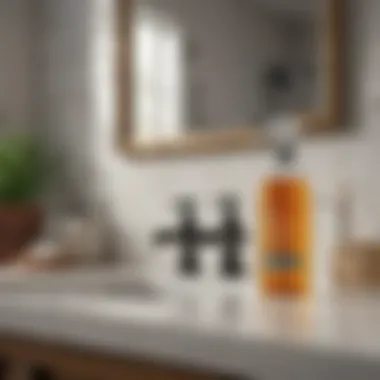
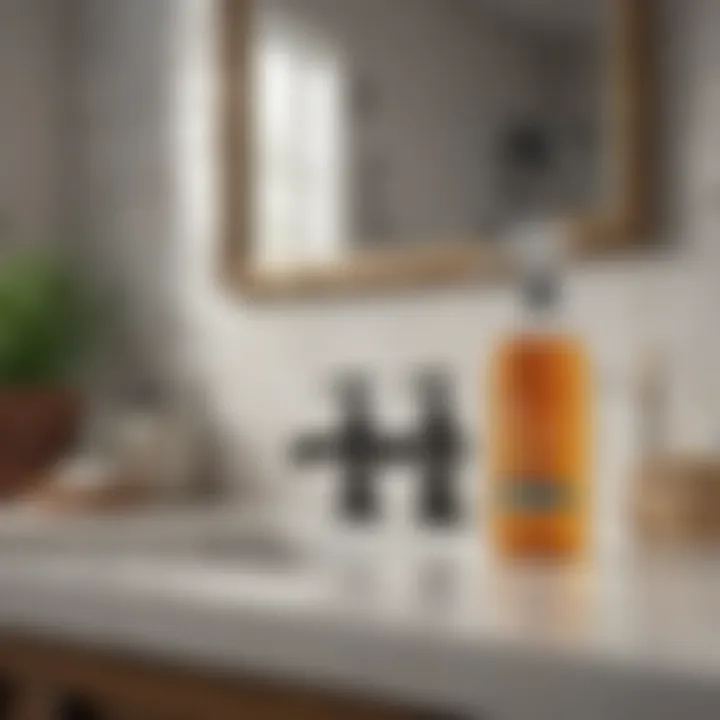
Intro
Keeping your bathroom clean isn’t just about aesthetics; it plays a critical role in promoting health and wellness. Every day, our bathrooms face moisture, soap scum, and bacteria that can build up quickly if not addressed. The right cleaning solutions not only help to keep surfaces sparkling but can also create a sanctuary for relaxation in our hectic lives. This guide aims to illuminate the multifaceted world of bathroom cleaners, discussing a variety of options, insights into ingredients, and the importance of eco-friendly choices.
Whether you prefer store-bought formulas or want to explore the realm of homemade solutions, understanding how each type functions is key to an effective cleaning routine. As we delve deeper, you’ll find valuable tips to maintain a fresh, inviting space, alongside recommendations that marry efficacy with environmental responsibility.
Design Inspirations
Trending Styles
The cleanliness of your bathroom often impacts how you feel about the space. Implementing inspiring designs can motivate a cleaner environment. For instance, minimalist styles emphasize decluttered surfaces and straightforward cleaning solutions, making daily upkeep easier. Often, a few simple colors or accessories can create a refreshing ambiance.
Color Palettes
Pastel shades like soft blues and greens can be soothing. These colors are not just visually appealing; they also can enhance the overall cleanliness perception. When selecting cleaning products, you might consider those that complement these hues. For an ultra-clean look, think about whites and creams, as they reflect light and give an impression of thorough hygiene.
Understanding Bathroom Cleaners
The market is flooded with diverse bathroom cleaning products, but knowing what to look for helps to streamline choices:
- Surface Cleaners: Often versatile, these can tackle various surfaces, from countertops to mirrors. Look for options that include ingredients like vinegar or baking soda for natural cleaning power.
- Disinfectants: Crucial for areas prone to germs, including toilet bowls and sink drains. Check for EPA registration to ensure effectiveness against bacteria.
- Specialty Cleaners: Designed for unique tasks, such as removing soap scum or hard water stains. These are often more concentrated, so use them sparingly yet effectively.
- Eco-Friendly Options: As awareness of environmental impact grows, products made from plant-based ingredients gain traction. These often eschew harsh chemicals, ensuring a safer cleaning experience.
Ingredients Matter
When choosing your bathroom cleaner, paying attention to ingredients can make all the difference:
- Natural surfactants: These help break down grime without the harsh effects of synthetic chemicals.
- Essential oils: They not only combat bacteria but also add delightful scents like lavender or eucalyptus.
- Enzymes: These are excellent for breaking down organic matter, making them fit for toilet bowl cleaners.
"Choosing the right cleaner can transform your routine and create a more inviting space."
Product Recommendations
When it comes to bathroom cleaning, a few standout products can make a world of difference:
- Seventh Generation Disinfecting Multi-Surface Cleaner: This eco-friendly option combines cleaning power with a commitment to sustainability.
- Method Antibac Bathroom Cleaner: Known for pleasing scents and effective disinfection.
- Dr. Bronner's Sal Suds: A versatile cleaner that’s perfect for those who want something more natural.
Culmination
Navigating the world of bathroom cleaners doesn’t have to be daunting. With a blend of knowledge about styles, materials, and eco-conscious options, you can curate a cleaning environment that not only looks good but also promotes well-being. Effective bathroom cleaning products are not just about containers on your shelf; they are integral to maintaining a healthy household.
Intro to Everyday Bathroom Cleaners
Maintaining a clean bathroom is about more than just appearances; it plays a vital role in the overall health and comfort of your home. Bathroom cleaners are not merely a convenience; they are essential tools in the battle against germs, mildew, and other unwelcome guests that thrive in damp spaces.
Using the right cleaners can make a world of difference. When you step into a well-kept bathroom, the atmosphere is inviting, fresh, and hygienic. Stale odors and dirty surfaces can quickly turn a haven into a source of distress. The nature of bathrooms means they collect more than their fair share of bacteria, leading to health considerations that should never be overlooked.
Moreover, having a variety of bathroom cleaning solutions at hand empowers you to tackle various surfaces effectively. From tiles and toilets to mirrors and faucets, each area has unique needs. Understanding these specific requirements can significantly enhance your cleaning process.
Additionally, today’s market offers a plethora of options. Commercial products are designed for efficiency, while DIY solutions, such as vinegar and baking soda, can be just as effective, often with less environmental impact. Knowing how to balance effectiveness with eco-friendliness is increasingly important to today's conscientious consumer.
In this context, let’s look at what makes bathroom cleaners indispensable:
- Health Benefits: Regular use of effective cleaning products helps in minimizing the spread of germs and allergens.
- Aesthetic Appeal: A clean bathroom enhances the overall look and feel of your home, making it more inviting to family and guests.
- Cost-Effectiveness: Investing in quality cleaners can save money in the long run by preventing damage from grime and buildup, allowing your fixtures and surfaces to last longer.
"Practicing good bathroom hygiene is an investment in your family's health and comfort."
In the following sections, we will dive deeper into the various types of cleaning solutions available, their ingredients, and practical tips for maintaining a spick-and-span bathroom. Through this guide, readers will gain insights not only into effective commercial products but also into the potential of homemade alternatives, paving the way for healthier routines and happier living spaces.
Importance of a Clean Bathroom
Keeping a bathroom spick and span goes beyond mere aesthetics; it’s the crux of maintaining a healthy living environment. The benefits of upholding cleanliness in this often overlooked space are plenty. From fostering physical health to enhancing the overall vibe of your home, a clean bathroom serves numerous pivotal roles.
Health Considerations
A clean bathroom is essential for promoting health. This space is home to an array of germs and bacteria, from E. coli that can thrive on surfaces to mold that may linger in damp areas. Regular cleaning reduces the chances of these unwanted guests taking residence in your sanctuary.
Consider these points:
- Preventing Illness: A spotless bathroom decreases the risk of illness by minimizing the chances of bacteria spreading. When you keep surfaces like countertops, toilets, and faucets clean, you create a barrier against harmful pathogens that can lead to infections.
- Fighting Allergens: Dust, mold, and mildew can wreak havoc on families, especially those with respiratory issues. Frequent cleaning, thorough scrubbing, and the right cleaning solutions can help minimize airborne and surface allergens.
- Psychological Impact: A dirty bathroom can also affect mental health. When your surroundings are cluttered and grimy, it can create stress. A clean bathroom promotes a sense of well-being, which is not to be underestimated.
Aesthetic Appeal
The visual quality of a bathroom can be a significant aspect of your home’s overall charm. A sparkling bathroom doesn’t just look pleasing; it creates an inviting atmosphere that tells guests they are in a space that is cared for.
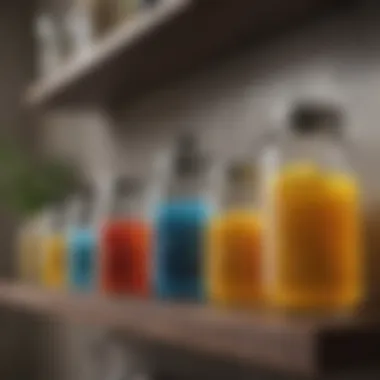
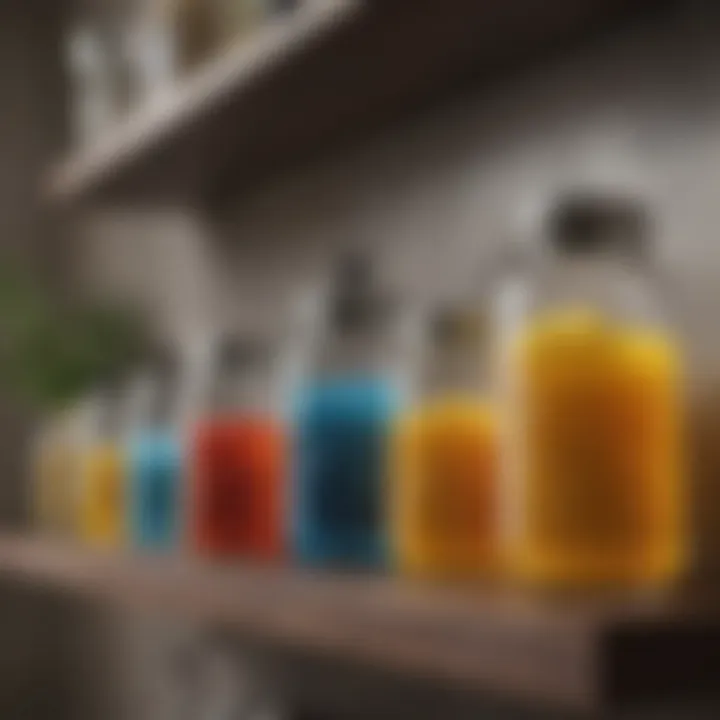
Here’s why aesthetics matter:
- Boosts Home Value: If you're planning to sell or rent your home, a clean, stylish bathroom can sway potential buyers or renters in your favor. First impressions matter; to potential buyers, a tidy, well-presented bathroom shouts luxury and care.
- Creates a Soothing Environment: After a long, tiring day, stepping into a clean bathroom can feel heavenly. The atmosphere becomes a sanctuary for relaxation when clutter and dirt are kept at bay.
- Personal Comfort: Beyond just being presentable for guests, a clean bathroom increases your own comfort level. Would you rather wash your hands in a sparkling sink or one filled with grime? Exactly.
"A clean bathroom doesn’t just reflect hygiene; it reflects your values and lifestyle. It's a statement of care for your home and its inhabitants."
Types of Bathroom Cleaners
In the quest for a spotless bathroom, understanding the various types of cleaners is paramount. This section breaks down the different options available, providing valuable insights into commercial and DIY cleaners. Each type brings unique properties to the table, addressing the diverse needs of a bathroom environment. Knowing the distinctions can help you in making a well-informed choice, ultimately leading to a cleaner and healthier space.
Commercial Cleaners
Commercial cleaners are often favored for their ease of use and effectiveness in tackling tough stains and grime. Below are the most common forms of these cleaners:
Spray cleaners
Spray cleaners are quite popular for their convenience and versatility. These ready-to-use solutions come bottled with a nozzle, allowing for easy distribution across surfaces. Their key characteristic lies in their immediate application—just spray and wipe. This simplicity makes them a go-to choice for quick clean-ups, especially in high-traffic areas.
One unique feature of spray cleaners is that they often contain surfactants that lower the surface tension of water, enabling better penetration into soiled areas. However, some might not be suitable for delicate surfaces, and the chemicals in certain products can be a concern for health and environmental safety.
Foam cleaners
Foam cleaners take the cleaning process a step further. They expand into a thick foam upon application, which clings to surfaces for better contact time. This feature makes them particularly effective at lifting dirt and stains, especially from tile grout and fixtures. The primary advantage of foam cleaners is that they often require less product per clean, making them economical.
On the downside, foam cleaners sometimes require longer contact time to be fully effective, and the residue left behind can necessitate extra rinsing.
Gels and liquids
Gels and liquids are another popular option for bath cleaning. These cleaners often provide targeted action—gels can cling to vertical surfaces, which is ideal for cleaning shower walls and bathtubs. Their key characteristic is their adaptability; both can easily be used with sponges or cloths for deep scrubbing.
Though they are generally effective, some liquid cleaners may require a skillful hand to avoid overuse, leading to wasted product. It's also worth noting that not all gels are created equal; some can be excessively harsh on surfaces, so identifying the right formula for specific tasks is important.
DIY Cleaners
For those looking to take a more personal and eco-conscious approach, DIY cleaners offer a world of possibilities. Here are some effective and common homemade solutions:
Vinegar and baking soda
This duo is often hailed as a powerhouse in the cleaning world. The combination of vinegar and baking soda creates a fizzing reaction that can lift dirt and grime off various surfaces. Their main appeal lies in their availability and non-toxic nature, which makes them a healthy choice for regular bathroom maintenance.
The significant benefit of using vinegar and baking soda is their ability to neutralize odors, making any space smell fresher. However, the reaction can get messy, and using too much vinegar directly on certain surfaces, like natural stone, can lead to damage.
Lemon juice
Lemon juice, with its natural acidity and delightful scent, is another fantastic DIY cleaner. Its key characteristic is its antibacterial properties, making it effective against germs on surfaces. Moreover, it helps in tackling soap scum and hard water stains like a pro.
A unique feature of lemon juice is that it can also double as a deodorizer, leaving the bathroom smelling citrusy fresh. On the downside, individuals with sensitive skin may find it irritating, and like vinegar, it can cause damage to certain materials if not used judiciously.
Essential oils
Essential oils are more than just fragrant additions to your cleaning routine; they can offer various cleaning properties depending on the type. For example, tea tree oil has notable antiseptic qualities, while lavender can soothe and calm the senses.
The main advantage of essential oils is their ability to enhance the effectiveness of other DIY cleaners while adding pleasant scents. They can also play a large role in user satisfaction with the cleaning experience. However, they may not possess the same level of cleaning power as vinegar or commercial cleaners. Mixing them incorrectly can lead to ineffectiveness or a waste of resources.
Remember: Always patch-test your DIY solution on a small surface before fully applying to ensure there's no adverse reaction.
In summary, whether opting for a commercial cleaner or whipping up a DIY solution at home, the key is to find what works best for your specific needs. Understanding the qualities of each type contributes to a well-rounded cleaning strategy.
Common Ingredients in Commercial Cleaners
Understanding the common ingredients found in commercial bathroom cleaners is vital for smart purchasing decisions. Many products boast impressive cleaning abilities, but it is the specific components that often determine their effectiveness, safety, and environmental impact. By familiarizing oneself with these elements, homeowners can choose cleaners that will meet their needs without compromising health or sustainability. This exploration delves into three principal categories: surfactants, acids, and fragrances and dyes.
Surfactants
Surfactants, or surface-active agents, play a crucial role in breaking down dirt and grime. These substances reduce the surface tension of water, allowing it to spread and penetrate more easily. They help lift soil from surfaces, making it easier to wipe away. There are various types of surfactants used in bathroom cleaners, including anionic, cationic, and nonionic surfactants, each serving their purpose.
Anionic surfactants tend to be particularly effective on organic soils, while nonionic surfactants excel at removing oils and greases.
When shopping for a cleaner, it's important to check the ingredient list. Some surfactants can irritate the skin or respiratory systems. Opting for brands that use milder, biodegradable surfactants not only aligns with eco-friendly values but also ensures safer use in homes, especially where children or pets are present.
"Choosing safer surfactants is not just smart; it is a way to express responsibility toward the environment and health.”
Acids
Acids are another cornerstone of bathroom cleaners, known for their ability to dissolve mineral deposits and tackle tough stains. Common acids include citric acid, vinegar, and hydrochloric acid. Each has its strengths and potential drawbacks.


- Citric acid is often derived from lemon juice and is gentler on surfaces. It can effectively combat lime scale and soap scum when it comes to cleaning faucets and showerheads.
- Vinegar, a household staple, also serves as a natural acid with multiple uses beyond cleaning. However, its strong scent might not be pleasing to all, and it’s less effective on certain materials, like marble or granite.
- On the other hand, hydrochloric acid often appears in heavy-duty commercial cleaners for tough jobs, like rust removal, but it should be handled with care due to its corrosion potential.
When considering acid-based products, it's essential to analyze the surfaces you are cleaning. Some acids can damage seals and finishes if not used correctly. Always follow directions and perform patch tests when trying out a new product to prevent unwanted damage.
Fragrances and Dyes
While the visual and olfactory appeal of bathroom cleaners may enhance the cleaning experience, fragrances and dyes can be a double-edged sword. Many commercial products are infused with synthetic fragrances aimed at leaving a fresh scent. However, these scents often come from chemical compounds that may cause allergic reactions or irritate the airways.
Dyes, on the other hand, are included solely for aesthetic value. They can make products visually appealing, but some may contain toxic elements that do not degrade easily in nature.
When opting for cleaners, it's wise to look for fragrance-free options or those made with natural scents, such as essential oils. This choice not only reduces potential irritants but is often better for the environment as well. Aim for products labeled as hypoallergenic or free of synthetic fragrances and dyes when possible, creating a healthier bathroom environment.
Understanding the ingredients in commercial bathroom cleaners arms homeowners with the knowledge needed to maintain both a clean and healthy home. Taking time to assess the surfactants, acids, and fragrances used can lead to better choices that balance cleanliness, safety, and environmental responsibility.
Selecting the Right Cleaner
Choosing the right bathroom cleaner goes beyond just picking something off the shelf; it’s about understanding the specific needs of your surfaces and the ingredients that go into them. When you're on a cleaning spree, considering the types of materials in your bathroom can make a huge difference in effectiveness and efficiency. A well-informed decision can lead to a cleaner, more hygienic environment while also extending the lifespan of your bathroom fixtures.
Assessing Surface Needs
Tiles
Tiles are a common choice for bathroom floors and walls, thanks to their durability and ease of cleaning. Their key characteristic is their water resistance, which is crucial in a damp environment. However, not all tiles are created equal; ceramic and porcelain tiles are popular due to their robustness. One major benefit of tiles is their ability to withstand stains, but if they are textured, dirt can collect in the crevices, requiring a product that can get into those grooves effectively.
A disadvantage is that harsh chemicals can sometimes dull the finish on certain tiles. Thus, it’s essential to select a cleaner specifically designed for the tile type in your bathroom. Using the wrong cleaner may lead to premature wear or even damage.
Glass
Glass surfaces, like shower doors and mirrors, can enhance the overall aesthetic of a bathroom, making it feel larger and more open. The smooth surface of glass is easy to clean but can quickly become streaky and foggy with soap scum and water spots. When selecting a cleaner for glass, look for products that provide clarity and shine without leaving behind a residue.
The advantage of using a cleaner designed for glass is that it cuts through grime specifically without affecting the reflective quality. However, the downside is that some glass cleaners contain ammonia, which can have a strong odor and may irritate some people's respiratory systems, especially in enclosed spaces.
Fixtures
Fixtures, such as faucets and showerheads, can be made from various materials including chrome, brass, and plastic. Their key characteristic is the shine they bring to the bathroom, but they also require specific maintenance to keep looking pristine. A well-chosen cleaner can prevent water spots and mineral buildup, ensuring that your fixtures remain untarnished.
One benefit of using the right cleaner is that they often protect against future staining or tarnishing. On the other hand, some cleaners may contain abrasives that can scratch and dull the surface, particularly if the fixture has a shiny finish. Thus, reading labels to find a product suitable for your specific fixtures is vital.
Environmental Considerations
In today's world, being conscious of environmental impact is imperative. This is where eco-friendly options come into play. Moving toward green cleaning products doesn't just benefit the planet; it also safeguards the health of your household.
Eco-friendly options
Eco-friendly cleaners are made from natural ingredients that are less harmful to both health and the environment. The popularity of these products stems from their non-toxic nature, making them safe for children and pets. These cleaners tend to break down easily in the environment, reducing chemical runoff and pollution.
One unique feature of eco-friendly options is that many are biodegradable, meaning they won't linger in the ecosystem. However, they might not always be as effective on heavy duty stains, and some users might find they require a bit more elbow grease compared to conventional cleaners.
Packaging impact
When considering the environmental footprint of cleaning products, packaging plays a significant role. Many manufacturers now focus on using recyclable materials and minimalistic designs, reflecting a shift towards sustainability. The benefit of choosing products with eco-friendly packaging is that it cuts down on plastic waste and promotes a cleaner environment.
However, a downside can be the price; eco-friendly options may sometimes carry a higher price tag due to the quality materials used. But investing in products that are both effective and sustainably packaged is a small price to pay for a healthier planet.
"Choosing the right cleaner not only boosts cleanliness, but it also nurtures a habit of responsibility toward our environment."
In summary, assessing your surface needs and considering eco-friendly options can greatly enhance the effectiveness of your bathroom cleaning routine. By being mindful of the products you choose, you contribute to a more sustainable future while keeping your bathroom in impeccable condition.
Homemade Cleaning Solutions
Homemade cleaning solutions offer a practical and cost-effective approach to maintaining a clean bathroom. They not only empower individuals to take charge of their cleaning routines but also allow for customization based on personal preferences and specific needs. Many commercially available cleaners come with labels packed with hard-to-pronounce chemicals. On the flip side, homemade formulations often utilize common kitchen staples that are not only effective but also safer for both occupants of the household and the environment.
Employing homemade cleaners means reducing reliance on the mass-produced options that often include a long list of synthetic ingredients. This shift can lead to better air quality and a reduction in chemical exposure. Additionally, being able to tailor the effectiveness of a cleaner to match the unique surfaces and materials in one’s bathroom is a significant benefit. For instance, some might find that vinegar is fantastic for glass surfaces but might not be the best choice for wood or stone.
Using homemade solutions can alleviate the feeling of waste often found in the constant purchases of commercial products. It's a way to do your bit for the planet while keeping your bathroom in tip-top shape.
Basic Recipes
Multipurpose cleaner
A multipurpose cleaner is like the Swiss Army knife in the cleaning world, making it a highly sought-after option for those tackling bathroom grime. With the simplicity of a few ingredients, such as vinegar, water, and a touch of lemon juice, this concoction is great for various surfaces including counters, sinks, and even mirrors. One of the key characteristics of a multipurpose cleaner is its versatility.
Many prefer this solution because it cuts through soap scum while leaving behind a fresh scent. The unique feature of a multipurpose cleaner is that it is often safe on multiple surfaces, so homeowners no longer need to juggle numerous bottles under the sink. However, it’s critical to note that its effectiveness can vary depending on the heaviness of the grime; heavy stains may still need a more targeted approach.
Tile scrub
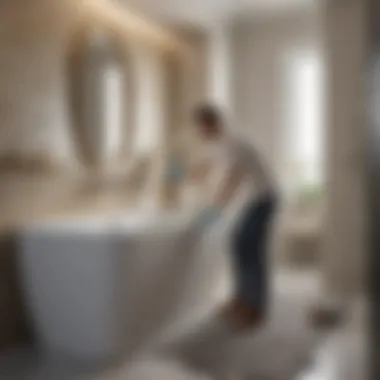
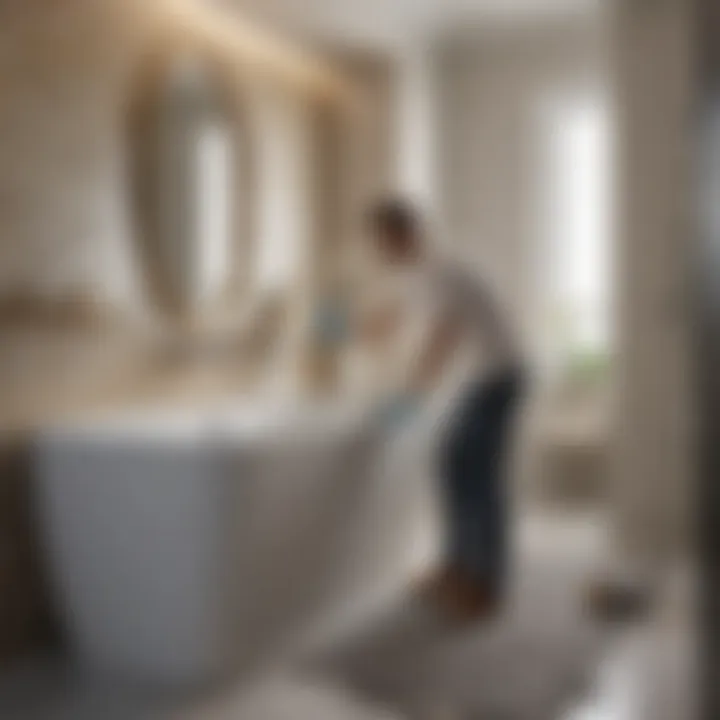
Keeping tiles spick and span can be a daunting task, but having a reliable tile scrub up your sleeve simplifies the job. Typically, this scrub consists of baking soda, with a hint of vinegar to amplify its cleaning prowess. The key characteristic of a tile scrub is its abrasive texture that effectively removes stubborn stains and grime without scratching most surfaces.
It’s chosen frequently for its efficiency and the satisfaction of seeing immediate results. The unique aspect here is that it’s made from inexpensive ingredients that many households already have. On the downside, it may require some elbow grease; for those who desire an effortless cleaning experience, it might not be the ideal option.
Sink and faucet polish
When it comes to achieving that sparkling look for sinks and faucets, a quality polish can ultimately transform the entire bathroom vibe. In terms of ingredients, most sink and faucet polishes consist of natural items, like olive oil and lemon juice or vinegar, to produce a shine that’s hard to replicate with commercial products.
The standout characteristic of sink and faucet polish is its ability to create a protective layer that not only shines but can also help resist future tarnishing or water stains. Many folks find this attribute beneficial in prolonging the time between future clean-ups. What’s more, the natural ingredients are non-toxic and environmentally friendly. The potential drawback, however, can be the more frequent need for reapplication compared to synthetic polishes.
Benefits of DIY Cleaners
Creating do-it-yourself cleaners offers a multitude of benefits. To start, they are generally more economical than store-bought options. With only a handful of ingredients, like vinegar and baking soda, housekeepers save money while ensuring cleanliness. The transparency in knowing what goes into these solutions often leads to peace of mind, especially for those conscious about chemical exposure.
Another advantage is the ease of preparation. Most recipes don't require cooking or complex steps, making it straightforward for anyone, regardless of their culinary expertise. The flexibility involved in customizing a recipe to target specific issues in the bathroom—like stubborn soap scum or hard water stains—also tops the list. As an added perk, the satisfaction of creating something from scratch caters to the desire for intentional living.
Overall, opting for homemade cleaning solutions aids in fostering a cleaner and healthier environment while also being a smart choice for the wallet.
Effective Application Techniques
In the pursuit of a spotless and inviting bathroom, the application techniques employed play a crucial role. It’s one thing to have the right cleaning product at hand, but without proper application, even the most effective cleaner could fall short of expectations. Understanding the methods for preparing the area, applying cleaners, and ensuring thorough rinsing makes the difference between a mediocre job and a standout result. These techniques not only enhance the efficiency of the cleaning process but also prolong the lifespan of the surfaces in your bathroom.
Preparing the Area
Before any scrubbing commences, preparing the area is essential. This step ensures that all surfaces are accessible and that clutter won’t interfere with the cleaning process. To begin:
- Clear the counters: Remove all personal items, toiletries, and any decor items that may hinder movement. This allows you to properly treat the entire surface without missing spots.
- Dust and sweep: A quick dusting of shelves and sweeping of the floor can do wonders. This removes any particles that may mix with cleaners, rendering them less effective.
- Ventilation: Open windows or turn on the exhaust fan. Good ventilation helps disperse any strong odors from commercial cleaners and prevents buildup of moisture which could lead to mold.
Thoughtful preparation creates a smooth pathway to effective cleaning, one where nothing stands in the way of achieving that fresh, clean feel.
Applying Cleaners
Once the area is ready, it’s time to put the cleaners to work. The application method can significantly impact the effectiveness of the cleaning solution:
- Follow instructions: Each product comes with specific directions. Whether it’s a foam cleaner or a gel, adhering to the manufacturer's guidelines can maximize performance.
- Use appropriate tools: Employ the right tools—sponges, cloths, or brushes. For instance, a soft cloth is suitable for mirrors, while a scrub brush can tackle tough grout stains. Using the correct tool for the job can enhance results.
- Apply evenly: Spray or pour the cleaner evenly over surfaces to ensure complete coverage. For larger areas, it may help to work in sections, making sure that no surface is overlooked.
"A well-applied cleaner is like music to the ears; each note plays its role in creating harmony in the space."
Rinsing and Drying
The final step—rinsing and drying—should not be overlooked. Neglecting this can leave residues that not only detract from the clean look but could potentially damage surfaces over time:
- Thorough rinsing: Using clean water to rinse surfaces removes any cleaner residue. Pay special attention to soap scum-prone areas like shower doors and tubs, as leftovers can lead to unsightly marks.
- Dry with care: After rinsing, drying surfaces is crucial. Utilize a microfiber cloth to wipe down all surfaces. This step prevents water spots, particularly on glass and tiles, ensuring everything looks pristine.
- Check your work: Finally, take a moment to step back and review your handiwork. This inspection can help catch any missed spots and ensure every nook and cranny shines.
In summary, mastering the techniques of preparing, applying, rinsing, and drying can elevate your cleaning routine from mundane to impressive. With attention to these details, a sparkling bathroom doesn’t have to be a distant dream—it can be an everyday reality.
Regular Maintenance Tips
Cleaning the bathroom isn’t just a one-and-done kind of deal. It's akin to maintaining a car; regular upkeep is necessary to ensure it runs smoothly and efficiently. Incorporating the right regular maintenance tips into your routine will not only elicit better results but also save you time and effort down the line. An effectively maintained bathroom can significantly enhance both hygiene and comfort, making it a space you feel good about.
Establishing a Routine
Creating a consistent cleaning schedule is vital. It helps to keep the mess at bay, ensuring things don’t snowball into a massive cleaning project later. You might consider breaking down tasks to make them more manageable. Here’s a simple approach to establishing a routine:
- Daily, do quick tasks like wiping countertops and checking for clutter. A five-minute tidy-up each day can work wonders.
- Weekly, tackle the toilet, shower, and sink with your cleaner of choice. It doesn’t take long if you do it consistently.
- Monthly, inspect and clean those overlooked areas, such as under the sink or behind the toilet. This habit goes a long way in avoiding the buildup of grime and mildew.
To help you along, consider leaving a sticky note in a conspicuous place as a gentle reminder of your cleaning goals. In no time, these actions will become second nature, simplifying the task of maintaining a fresh bathroom.
Deep Cleaning Intervals
While regular upkeep is essential, deep cleaning every once in a while is equally critical. It goes beyond mere surface cleanup, digging into those nooks and crannies that often harbor hidden dirt and bacteria. This deeper cleaning could be scheduled quarterly or biannually, depending on your needs and preferences.
Elements to consider during deep cleaning include:
- Scrubbing grout lines: A toothbrush is fantastic for this!
- Disinfecting: Use appropriate cleaners, like bleach or vinegar, to tackle tough bacteria in the toilet bowl and around fixtures.
- Checking ventilation: Ensure that exhaust fans are working efficiently to prevent mold growth.
"A clean space leads to a clear mind. Taking the time to do a thorough clean gives a much needed reset, not just for your bathroom but for your entire home."
Incorporating both regular routines and deep cleaning intervals provides a comprehensive approach to bathroom cleanliness. This means fewer surprises and a more pleasant experience every time you step foot into your bathroom. You’ll find that with consistent attention, the bathroom transforms into a sanctuary rather than a chore.
End
Wrapping up our deep dive into bathroom cleaning solutions, it is clear that keeping this space clean is not just about aesthetics; it's a matter of health, practicality, and well-being. A pristine bathroom can significantly influence both mood and hygiene, impacting daily routines and the overall atmosphere of a home.
One key takeaway is the significance of selecting the right cleaning products. Whether you lean towards commercial solutions or prefer whipping up your own diy recipes in the kitchen, understanding the ingredients behind these cleaners plays an essential role in creating a safe environment. The interplay of different elements—including surfactants, acids, and fragrances—has a profound effect on cleaning efficacy and long-term surface health.
Moreover, this guide has illuminated various effective techniques for applying these cleaning products. Whether you’re spritzing a specialized spray on shower tiles or using an acidic cleaner on rust stains, the method of application matters just as much as the cleaner choice itself. Little habits, like rinsing surfaces properly or allowing product dwell time, can elevate your cleaning game significantly.
Another essential aspect curves around maintenance routines. Establishing consistent cleaning habits, paired with a sensible deep cleaning schedule, ensures that your bathroom remains a welcoming oasis. Here, simplicity often triumphs; a few minutes spent daily can save hours of frustration and mess later on.
"Cleanliness isn't just a matter of appearance; it's a reflection of the care we invest in our living spaces and our health."
In doing so, you're not just cleaning; you're creating a sanctuary for yourself and your loved ones.



